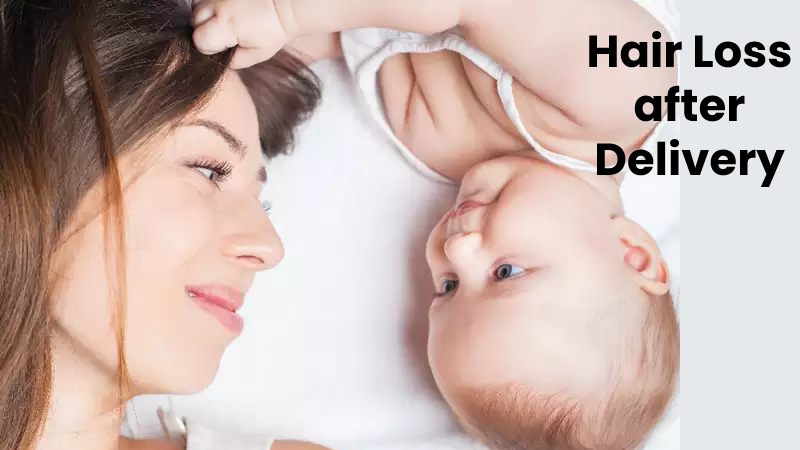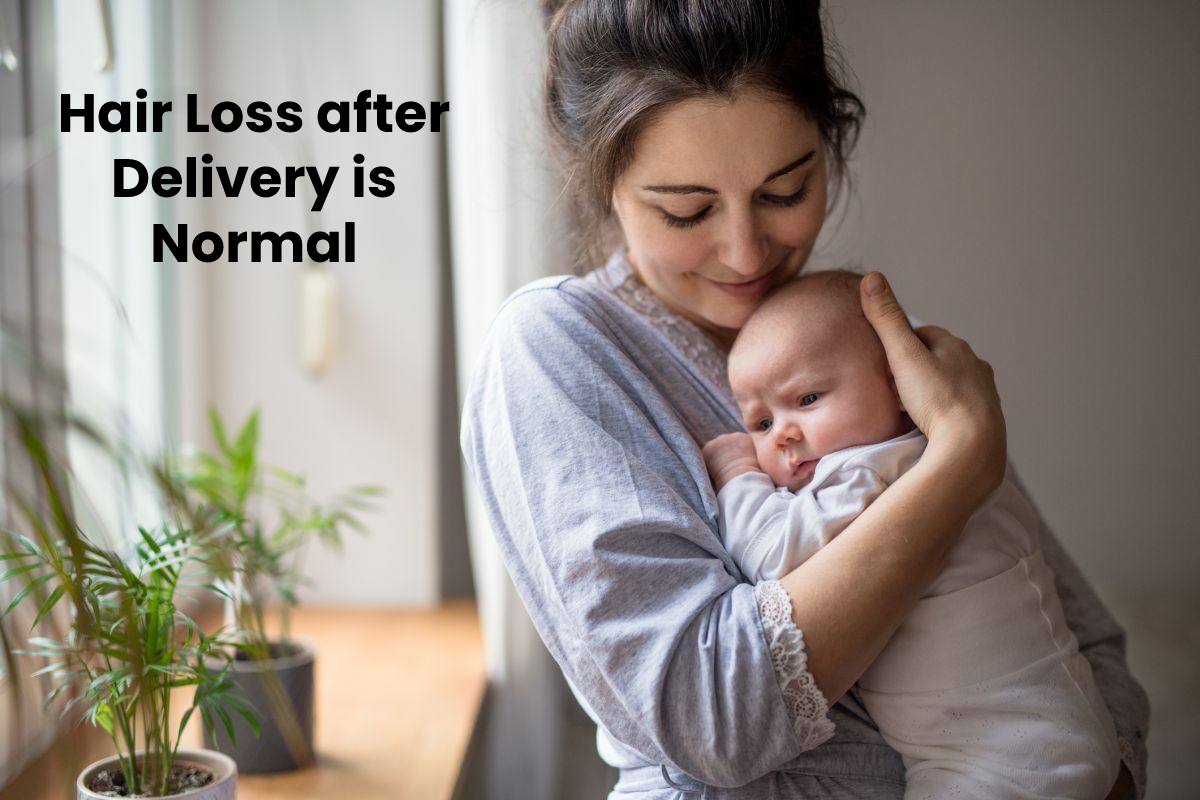In routine, women lose approximately 100 hairs daily without any disease. Hairfall is a widespread hair/skin problem that has many causes. One of its causes can be postpartum hair loss. Hair fall after delivery remains seen in usually 40 to 50% of females. It is a very distressing condition that new mothers face after pregnancy or in the first few months after delivery.

Postpartum hair loss, also known as postpartum telogen effluvium (PPTE), is a temporary phenomenon that starts 2 to 4 months after delivery and lasts for only the first few months after pregnancy or delivery, which is quite normal. There is no need to worry about it.
The normal hair cycle replaces each hair every 3-5 years
with three hair cycle phases – anagen, catagen, and telogen – lasting 2-8 years, 2-3 weeks, and three months, respectively. In telogen, effluvium hair loss occurs three months after the triggering event and is self-limiting.
Table of Contents
Causes of Hair Loss Include:
The reason for postpartum hair fall is that estrogen hormone levels are high during pregnancy, and most hairs are in a growing phase, with very few inches in a resting phase, compared to non-pregnant ladies. As a result, follicles stop falling out as they usually would. During pregnancy, there are thick and solid hairs for the same reason.
These things change after delivery as estrogen levels fall, and many hair follicles go into resting mode and begin to fall abruptly, but this is not a permanent hair fall. Instead, this hair loss can last 6 to 8 months, and the amount of hair loss varies from mother to mother.
Hair Loss Treatment: Patients should consult their dermatologist if their hair loss is increasing daily, as other causes of hair loss, such as anemia (due to excessive blood loss during delivery) or postpartum thyroiditis, may exist.
There is no need for treatment for hair loss after childbirth because it is a natural process caused by hormonal changes; however, one should consult a doctor to rule out other possible causes of hair loss
There Are Few Preventive Measures.
- Consume a nutritious and well-balanced diet.
- vitamin supplementation as directed by your doctor
- Avoid using hair dryers or hot irons.
- When washing and combing your hair, be extra gentle.
- Avoid using direct heat on your hair.
- Avoid using tight hairstyles.
- Take no stress.
- Make use of a comb with widely spaced teeth.
- Sleep well
- Be patient.
What can I do if I’m Experiencing Postpartum Hair Loss?
Postpartum Hair Loss Treatment
To make your hair appear fuller and to help new hair regrowth blend in, try a new haircut (with a bonus of less yanking from your baby)
When washing, brushing, and styling your hair, be extra gentle.
Avoid tight hairstyles that put pressure on your scalp and hair.
Does childbirth cause hair loss?
Postpartum hair loss can begin any day after your baby is born and last up to a year. However, it usually peaks around four months, so if your baby is a few months old and you still lose clumps of hair, don’t panic!
Conclusion:
After pregnancy, many new mothers experience excessive hair shedding. Hair loss usually peaks four months after giving birth. Most women regain average hair growth by their child’s first birthday. You should consult a dermatologist if your hair has not returned to its normal fullness after a year.

